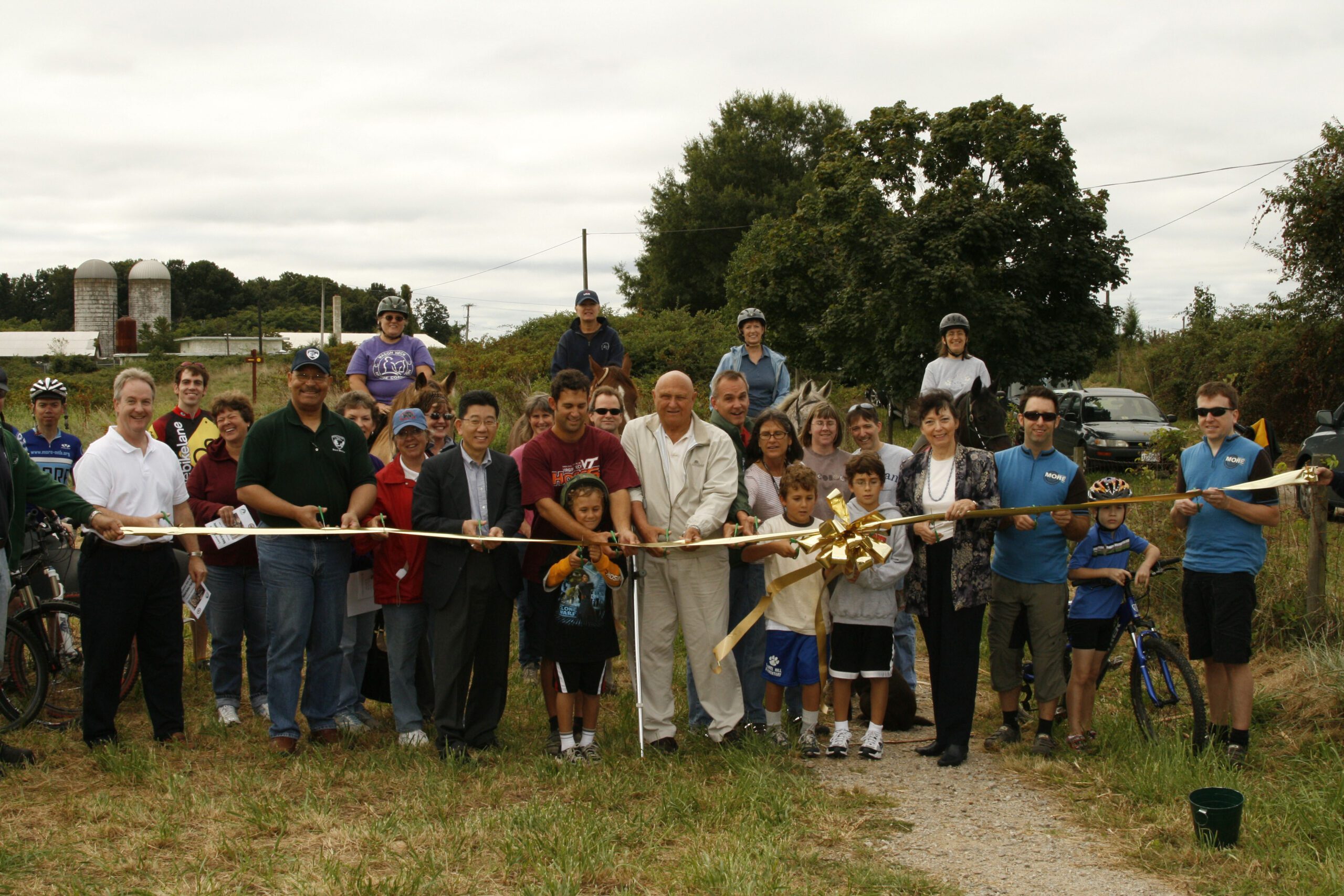By Benjamin T. Boxer
Public Information Officer | Fairfax County Park Authority
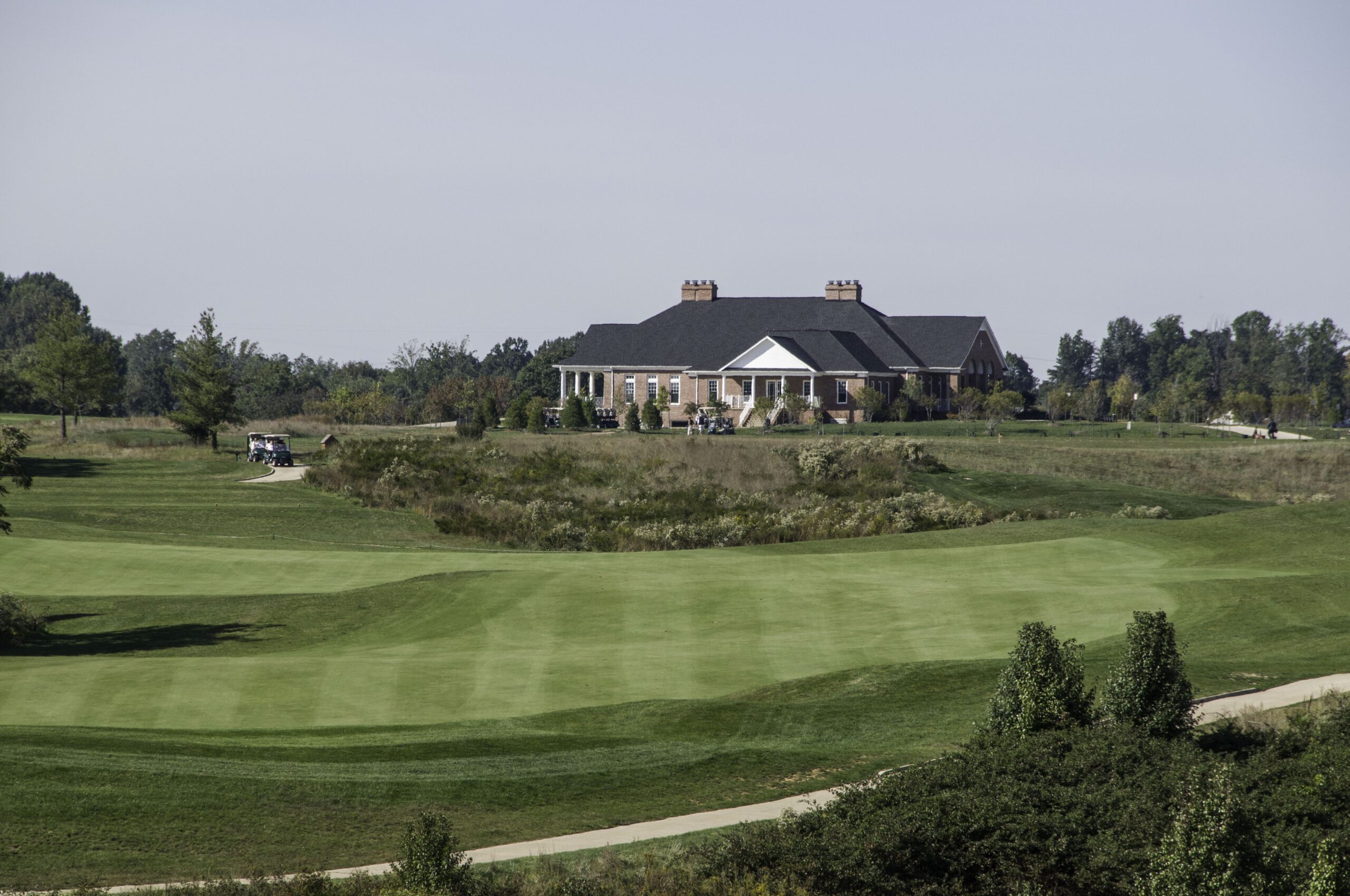
For the better part of a century, the grounds of the District of Columbia Correctional Facility in Lorton Virginia, one of the most beautiful parcels of land in Fairfax County, were restricted and, to an extent, hidden from public view. The 2,400-acre site was an oasis of open space – and some of the most beautiful parcels of land in Fairfax County – three times larger than New York City Central Park.
Since the dawn of the 21st century, the Fairfax County Park Authority has been executing a communitywide vision for the transformation of the former prison into a jewel among the Fairfax County Park Authority’s 420 parks. Today, Laurel Hill Park, renamed after the historic home of a Revolutionary War patriot William Lindsay in 1766, is beloved for its world-class golf course, disc golf course, 10 miles of trails, an equestrian center, central green, community gardens, and forth-coming athletic fields. But like any great transformation story, it’s best to start at the beginning.
Prelude to a Park
The beginnings of Laurel Hill Park stretch back to 1908 when President Theodore Roosevelt appointed a penal commission to investigate the deplorable conditions of the District of Columbia’s jail and workhouse in Washington. The commission recommended wholesale changes which included a new prison where inmates could be rehabilitated through work. Congress authorized the purchase of land just north of the Occoquan River that would allow access to nature, natural light and clean air, and house prisoners in dormitories rather than cell blocks.
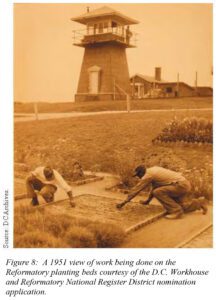 Lorton was an agricultural work camp including cultivated fields, pastures, orchards, poultry farm, hog ranch, slaughterhouse, smokehouse, dairy, blacksmith shop, sawmill, and barns for livestock, feed, hay and storage. Prisoners farmed and at a kiln complex located along the river produced bricks for prison buildings and roads. During the 1950s, at the height of the cold war, the missile site was constructed on 30 acres at Lorton, part of the nationwide NIKE anti-aircraft defense system.
Lorton was an agricultural work camp including cultivated fields, pastures, orchards, poultry farm, hog ranch, slaughterhouse, smokehouse, dairy, blacksmith shop, sawmill, and barns for livestock, feed, hay and storage. Prisoners farmed and at a kiln complex located along the river produced bricks for prison buildings and roads. During the 1950s, at the height of the cold war, the missile site was constructed on 30 acres at Lorton, part of the nationwide NIKE anti-aircraft defense system.
In 1998, Representative Tom Davis introduced legislation to close the prison and transfer ownership of the 2,400 acre-site to the Fairfax County Board of Supervisors for the bargain price of $4.2 million. The Lorton Technical Correction Act required Fairfax County to develop a reuse plan that would maximize use of land for open space, parkland or recreation as a condition of the transfer of ownership. In February 1999, the Fairfax County Board of Supervisors convened a Citizen Advisory Committee to develop a reuse plan. The committee designated approximately 1,200 acres as parkland, which was transferred to the Fairfax County Park Authority, with the remainder of the acreage including sites for three public schools, residential use, and the site of the Workhouse Arts Center.
The land was officially transferred in 2002, and thus began the transformation of the once federal prison site to a world-class asset for Fairfax County and its residents.
Laurel Hill Park: The Jewel of Fairfax County’s Southern Gateway
The evolution of Laurel Hill Park didn’t happen overnight, but steady progress – accented by significant community engagement – has delivered outstanding amenities that serve residents of all ages, interests and abilities.
 (2005) Laurel Hill Golf Club. This world-class golf course has challenged the skills of beginners and professionals alike for nearly two decades. The 18-hole, 7,000-plus yard course has the best playing conditions of any public course in Northern Virginia and is perennially rated among the top courses in Virginia. With beautifully maintained rolling hills and scenic vistas the course not only is a treasure for golfers but is a highly sought-after site for hosting weddings and other family and corporate gatherings of significance.
(2005) Laurel Hill Golf Club. This world-class golf course has challenged the skills of beginners and professionals alike for nearly two decades. The 18-hole, 7,000-plus yard course has the best playing conditions of any public course in Northern Virginia and is perennially rated among the top courses in Virginia. With beautifully maintained rolling hills and scenic vistas the course not only is a treasure for golfers but is a highly sought-after site for hosting weddings and other family and corporate gatherings of significance.
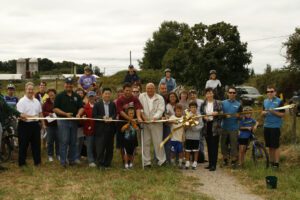 (2008) Laurel Hill Greenway and Giles Run Meadow Disc Golf. The Laurel Hill Greenway is the primary north-south corridor through the site following the bed of the prison railroad and extending under the historic barrel bridge constructed in the 1920s most likely by prisoners with the bricks they made at the kiln. The are approximately 10 miles of multi-use trails. Part paved and part stone dust, the Laurel Hill Greenway also serves as the southern terminus of the 42-Mile Gerry Connolly Cross County Trail. In direct response to a community outpouring of support, an 18-hole disc golf course was installed in 2008.
(2008) Laurel Hill Greenway and Giles Run Meadow Disc Golf. The Laurel Hill Greenway is the primary north-south corridor through the site following the bed of the prison railroad and extending under the historic barrel bridge constructed in the 1920s most likely by prisoners with the bricks they made at the kiln. The are approximately 10 miles of multi-use trails. Part paved and part stone dust, the Laurel Hill Greenway also serves as the southern terminus of the 42-Mile Gerry Connolly Cross County Trail. In direct response to a community outpouring of support, an 18-hole disc golf course was installed in 2008.
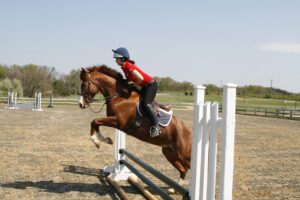
(2014) Laurel Hill Equestrian Center. Constructed near the old dairy barn at the Lorton Prison, the Equestrian Center includes a 200’ x 250’ multi-use, outdoor riding ring with all-weather footing, stadium jumps and dressage markers. Ring equipment is maintained by Fairfax4Horses and the Park Authority. It is open for public use from dawn until dusk except for regularly scheduled maintenance, private rentals, horse shows or inclement weather conditions. The Equestrian Center is connected to the 10-mile Laurel Hill Greenway trail system. The trails are open to horses, bicycles and pedestrians.
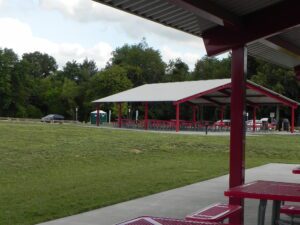
(2021) Laurel Hill Central Green. If you’re looking for a beautiful open space with room to gather, visit the Laurel Hill Central Green. Complete with four large picnic shelters, each with a capacity for up to 213 people, it’s the perfect spot for reunions, corporate parties, community gatherings and other special occasions. The Central Green has a large open field and playground, and the Park Authority is in the process of constructing a public restroom at the location. Located within an easy walk to the Giles Run Meadow Disc Golf and connected to the Laurel Hill Greenway, the Central Green offers a wide range of options to stay and play or set off on an adventure of your own making along the trail.
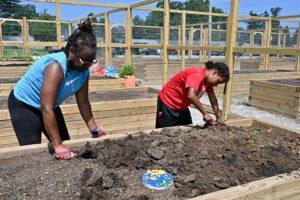 (2023) Laurel Hill Community Gardens. Using a portion of the former NIKE missile site, the Park Authority constructed 19 community garden plots. Administered as part of the Community Garden Plot rental program, the gardens allow residents who may not have access to gardening space at their residences to enjoy growing fresh fruits and vegetables. These gardens provide several accessibility conveniences that open the activity to all residents – regardless of mobility concerns. Features include a hard-packed stone dust surface, wide doorways and aisles, and raised garden beds to eliminate the need to bend and stoop to ground-level. Some of the produce raised in these community gardens will be distributed through the local food pantry to individuals and families facing food insecurity.
(2023) Laurel Hill Community Gardens. Using a portion of the former NIKE missile site, the Park Authority constructed 19 community garden plots. Administered as part of the Community Garden Plot rental program, the gardens allow residents who may not have access to gardening space at their residences to enjoy growing fresh fruits and vegetables. These gardens provide several accessibility conveniences that open the activity to all residents – regardless of mobility concerns. Features include a hard-packed stone dust surface, wide doorways and aisles, and raised garden beds to eliminate the need to bend and stoop to ground-level. Some of the produce raised in these community gardens will be distributed through the local food pantry to individuals and families facing food insecurity.
Laurel Hill Park is an extraordinary example of adaptive reuse of public lands. Transformed from an enclosed, separated property with mysterious and even undesirable characteristics, Laurel Hill is now a jewel to behold, serving millions of residents each year.

